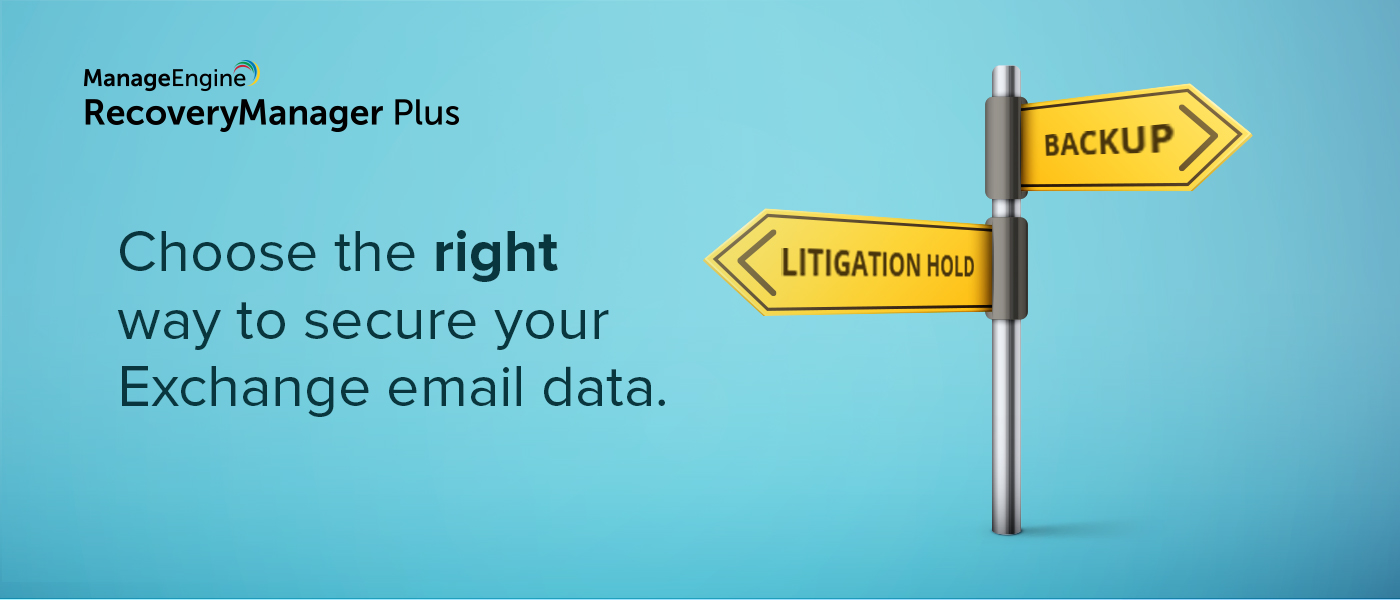
Microsoft does not provide backup and recovery tools for its Office 365 services and has no plans to include them in the future. Some organizations use litigation holds as a substitute for email data protection, but this method doesn’t meet all the requirements that are expected of a backup solution.
A litigation hold placed on mailboxes or mailbox folders will effectively prevent intentional or unintentional data deletion, preserving the data for legal proceedings or to meet regulatory requirements. While litigation holds are capable of preserving existing data, there are a few hurdles that prevent litigation holds from being a proper substitute for backups.
1. A litigation hold does not create a copy of data in a secondary physical location.
Litigation holds do not create a copy of your email data that you can store in a secure location. The purpose of a litigation hold is to protect your data from being sabotaged or unintentionally deleted when it might be needed for an ongoing legal dispute.
Consider a situation where a mailbox is infected by ransomware. You cannot delete the infected email if the mailbox is in litigation hold. Also, since there’s no secondary copy of the data, there’s no option to delete the infected email and restore the rest.
2. Mailbox size and storage costs can quickly increase if you use litigation holds.
Email is still the predominant mode of communication both within organizations and with your customers. With Exchange allowing attachments of up to 150MB per email, it’s not uncommon for your mailbox to get full—especially if you receive a lot of emails with attachments.
Since litigation hold does not allow you to delete emails or other mailbox items like notes and journals, you’ll inevitably need additional mailbox storage and end up paying more for storage.
3. Litigation hold does not provide the option to directly restore mailboxes.
When an employee leaves an organization, it can be a challenge to move particular folders of mailbox data to another employee’s mailbox. While it’s relatively easy to export an entire mailbox as a PST file and import it to a new mailbox, it’s not as simple when individual mailbox folders have to be moved.
With an efficient Exchange backup tool, you can restore an entire mailbox or just parts of it to a new mailbox in just a few clicks.
The RecoveryManager Plus advantage
This is where an Exchange backup tool like RecoveryManager Plus comes in handy. Rather than relying on litigation holds to secure your Exchange mailbox data, you can utilize RecoveryManager Plus to maintain a non-executable copy of a mailbox in the form of a backup or PST file, stopping ransomware threats in their tracks. You can also protect your Exchange system easily by deleting any corrupted emails from your mailboxes.
You can maintain a copy of all mailbox data in your backup repositories and enable stringent retention policies in your Exchange environment to reduce the size of your mailbox. RecoveryManager Plus’ point-in-time restoration capabilities allow you to restore entire mailboxes, particular mailbox folders, or even individual items, to the same mailbox or a different mailbox.
To get hands-on experience with how RecoveryManager Plus handles Exchange backup and restoration download a 30-day free trial.
** Optrics Inc. is an Authorized ManageEngine partner
The original article can be found here:


